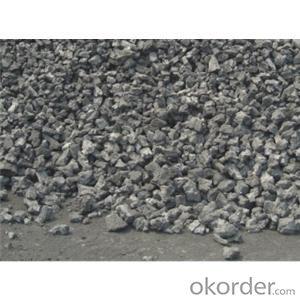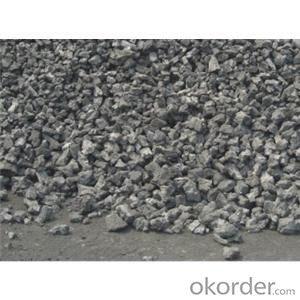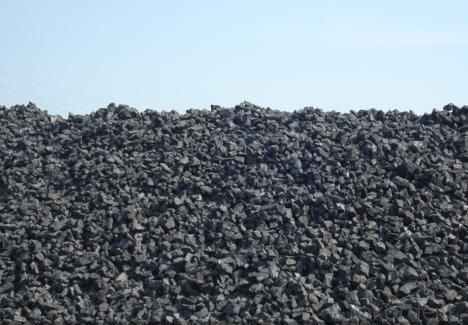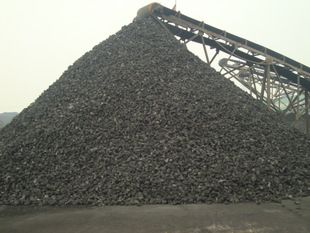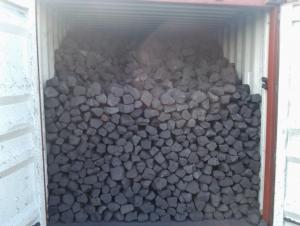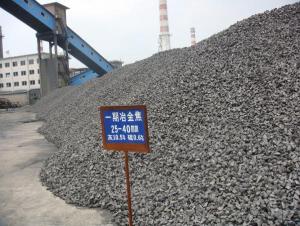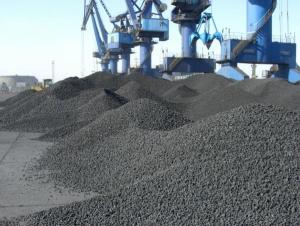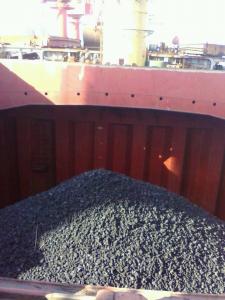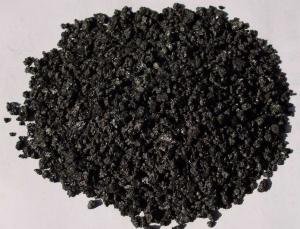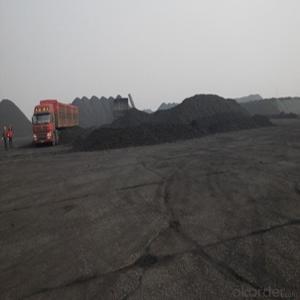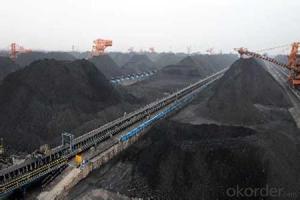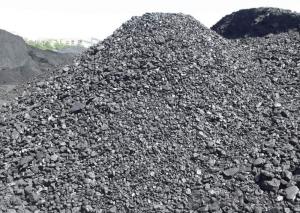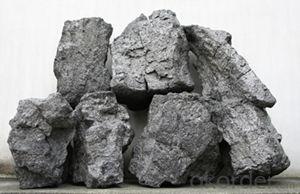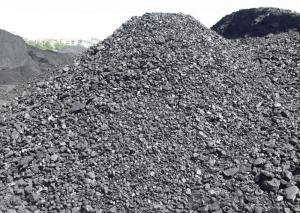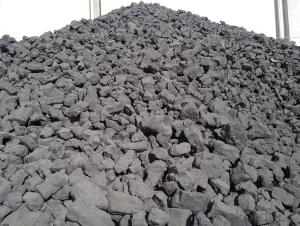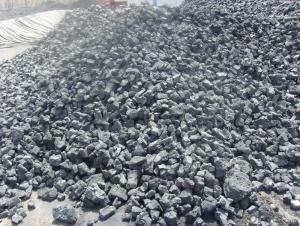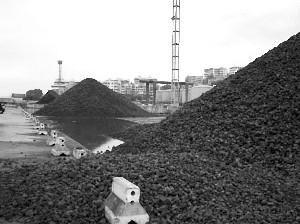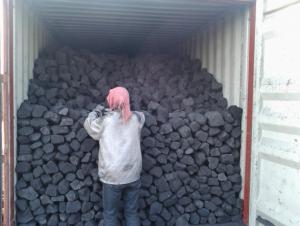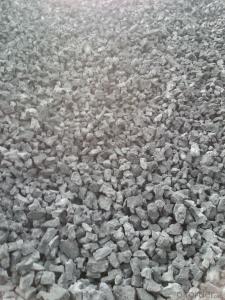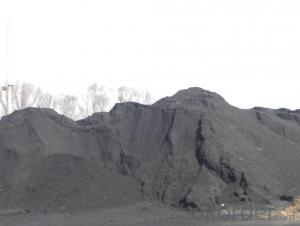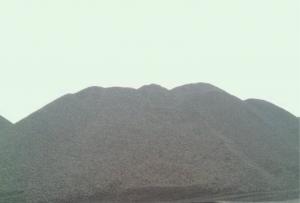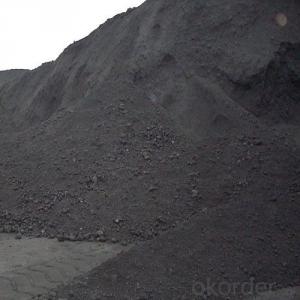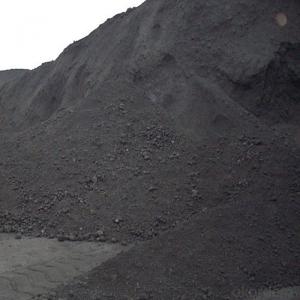Metallurgical Coke : 40 -- 100 mm
- Loading Port:
- Tianjin
- Payment Terms:
- TT OR LC
- Min Order Qty:
- 100 m.t.
- Supply Capability:
- 3000 m.t./month
OKorder Service Pledge
OKorder Financial Service
You Might Also Like
1. Structure of Metallurgical Coke : 40 -- 100 mm Description:
Coke is made by high temperature metallurgical coke for blast furnace smelting, casting and gasification. Occurring in the process of coking after recovery and purification of coke oven gas is a high calorific value of fuel, is an important industrial raw material in organic synthesis.
Coke is mainly used for blast furnace ironmaking and used for copper, lead, zinc, titanium, antimony, mercury and other non-ferrous metal smelting of blast furnace, reducing agent, compound and the function of stock column frame.
Blast furnace with Coke instead of charcoal, which laid a foundation for the large-scale of modern blast furnace, is a major milestone in the history of metallurgy.
On China's coke production distribution, the regional distribution imbalance of coking enterprises, mainly distributed in north China, east China and northeast China.
2. Main Features of the Metallurgical Coke : 40 -- 100 mm :
• Quality assurance
• Mutual benefit
• Preferential price
• Various choice
3. Metallurgical Coke : 40 -- 100 mm Images:
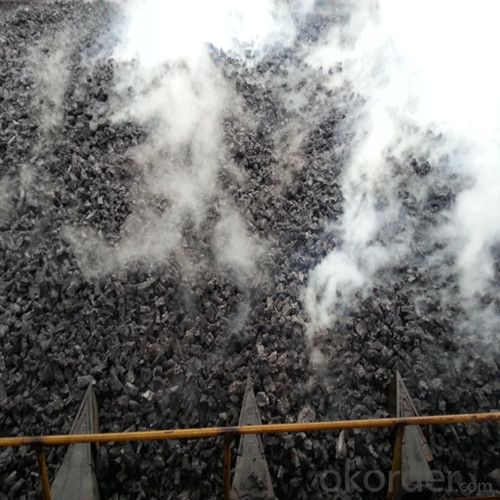
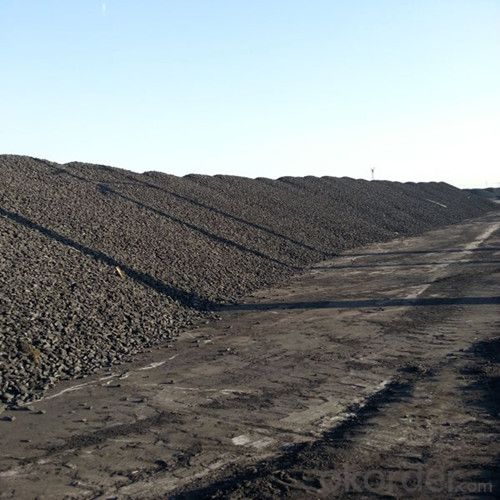
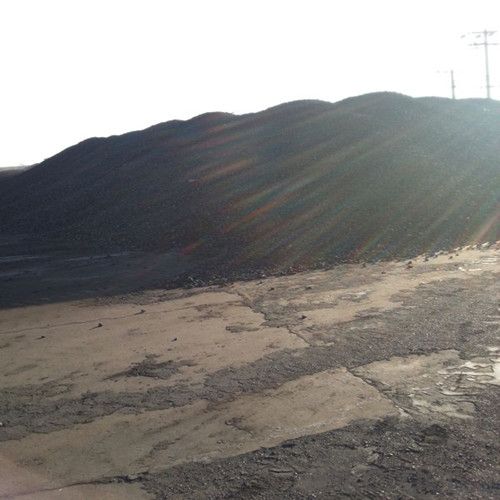
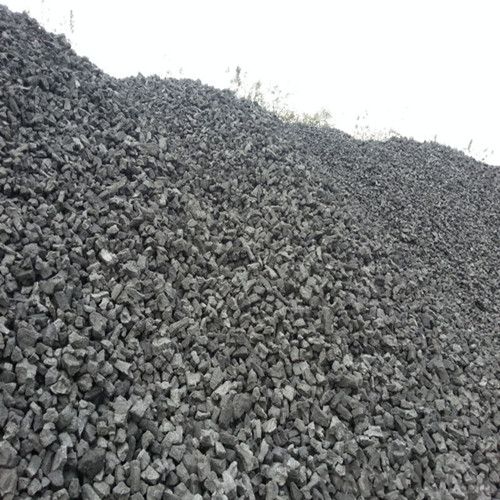
4. Metallurgical Coke : 40 -- 100 mm Specification:
Parameters | Guarantee |
Moisture (ARB) | 5% max |
Ash (DB) | 12.50% max |
Volatile Matter (DB) | 1.4% max |
Sulphur (DB) | 0.7% max |
Phosphorus (DB) | 0.035% max |
CSR | 62% min |
CRI | 28% max |
M40 | 82% min |
M10 | 8% max |
Size 40-100 mm | 90% min |
+100 mm | 5% max |
-40mm | 5% max |
Mean Size | 58 mm |
5. FAQ
We have organized several common questions for our clients,may help you sincerely:
1) How to guarantee the quality of the products?
We have established the international advanced quality management system,every link from raw material to final product we have strict quality test;We resolutely put an end to unqualified products flowing into the market. At the same time, we will provide necessary follow-up service assurance.
2) What are coke's main physical properties?
on the relative density of density, coke, coke porosity, thermal conductivity for the heat capacity of coke, coke, coke, coke ignition temperature, coke thermal expansion coefficient of thermal stress and coke, coke shrinkage rate, coke resistivity permeability, etc.
The average heat capacity is 0.808 kj/(KGK) (100 ℃), 1.465 kj/(KGK) (1000 ℃)
Thermal conductivity is 2.64 kj/(MHK) (room temperature), 6.91 kj/(MHK) (900 ℃);
Ignition temperature (air) is 450-650 ℃.
3) How about your company?
Our company began to export coke when China cancelled 40% of coke export tariffs and quotas on January 1, 2013. We export many kinds of coke, such as CSR60 % and CSR 62% metallurgical coke (met coke), the NUT coke of 20 to 50 mm, coke breeze of 3 to 6 mm, and so on.
- Q: The difference between coal and coke
- The semi coke production tend to low temperature carbonization, distillation temperature at 600 degrees Celsius, due to a late start, at present the low temperature carbonization furnace single furnace annual output of 30 thousand tons / year in most equipment under low temperature carbonization furnace forum of more than 50 thousand tons / year scale is still at the exploratory and experimental stage, technology of the large-scale equipment is still not mature, can only achieve centralized mass production using a combination of multi furnace technology. The use of coal field is quite widespread, especially in the carbonaceous reducing agent has unique properties, economic advantages are very obvious.
- Q: Various types of coal coke are the main test items
- The basic instrument of coal laboratory of these conventional indicators required are: calorimetry, sulfur detection apparatus, muffle furnace (Gao Wenlu), or when the microcomputer controller temperature controller, drying oven (oven), instrument, glial layer measuring instrument, the ash melting point determination of caking index, in addition to auxiliary equipment: crusher, pulverizer, electronic balance, vibration sieve machine, two points etc.. The above is the coal test indicators by Hebi Huanuo coal testing equipment factory to provide, I hope to help you.
- Q: Which heroes know, please give the source of the data.
- From the production equipment and technology of the popular view, a ton of coke oven gas produces about 400 cubic meters, of which about 200 cubic meters of coke oven returned through the pipeline used for coking heat source, the remaining more than and 200 cubic meters was emptying, "or the lantern".
- Q: After the long-term use of non stick pan, oil stains can not be effectively removed, over a long period of time in the non stick coating on the formation of a layer of coke, the effect of losing non stick. As a result of this layer of coke is relatively dense and smooth, scouring cloth has been ineffective, steel ball can not be used to damage the coating, what chemical or physical methods to remove this layer of coke?
- Soak in hot water for a few hours (or a day and night).Two, with cooking shovel (Mason's Pihui knife is best) to remove surface soft.Three, the same with a spade close to the bottom of the pot to eradicate. Until the last thing left is black.
- Q: What is the difference between coking plant and coke plant
- Never heard of coke plant, coking plant is the production of coke products, there are other chemical products, it is estimated that you said the coke plant is the purchase of other people's desire to sell second-hand coke traders.
- Q: Listen to a lot of people say that steel is now coke is not true?
- Steelmaking is definitely not coke, but now most of the very mature iron making technology needs coke, the future direction of development of iron is not used or less coke
- Q: Can the sulfur content of coke affect the casting process of nodular cast iron at 0.65?
- The high sulfur content of nodular cast iron, the most significant impact on the casting is caused by poor balling,
- Q: What is the use of coke
- The physical properties of the coke coke coke screening composition, physical properties including bulk density, coke coke coke true relative density, apparent relative density and porosity of coke, coke, coke, thermal conductivity and specific heat of coke thermal stress, ignition temperature of coke, coke, coke thermal expansion coefficient of shrinkage, resistivity and permeability of coke coke. The physical properties of coke are closely related to its mechanical strength, thermal strength and chemical properties at room temperature. Following the main physical properties of coke: true density is 1.8-1.95g/cm3 0.88-1.08g/ cm3; apparent density; porosity is 35-55%; bulk density is 400-500kg/ m3; the average heat capacity is 0.808kj/ (KGK) (100 C), 1.465kj/ (KGK) (1000 DEG C); the thermal conductivity is 2.64kj/ (MHK) (room temperature), 6.91kg/ (MHK) (900 DEG C); ignition temperature (air) is 450-650 DEG C; dry ash free calorific value is 30-32KJ/g;
- Q: What are the requirements for the quality of coke in blast furnace smelting
- Evaluation of coke quality1, sulfur content in coke: sulfur is a harmful impurity of iron smelting, which reduce the quality of pig iron. The sulfur content in the pig iron is more than 0.07%. 11% of the sulfur from the blast furnace charge into the furnace comes from the ore, and the other comes from the limestone; the other is from the coke, so the coke is the main source of sulfur in the charge of the 82.5% of the charge. Sulfur content in coke directly affects the production of blast furnace. When the sulfur content in coke is greater than 1.6%, sulfur increased 0.1%, the amount of coke increased 1.8%, limestone amount increased 3.7%, 0.3% increase in amount of ore blast furnace output to reduce the sulfur content under 1.5 - 2.0%. metallurgical coke is not greater than 1%, the use of large and medium-sized metallurgical coke content in blast furnace is less than 0.4 - 0.7%.2, the phosphorus in the coke: iron metallurgical coke coke content should be in the following 0.02 - 0.03%.3, the ash content of coke: Coke Ash on the impact of the blast furnace smelting is very significant. Coke ash increased by 1%, coke consumption increased by 2 - 2.5%, therefore, the reduction of coke ash is very necessary.
- Q: The cost of iron ore and coke
- The full cost of 2300 yuan / ton, manufacturing cost of 1950 yuan / ton, the use of iron ore per ton of steel 1.6 tons
Send your message to us
Metallurgical Coke : 40 -- 100 mm
- Loading Port:
- Tianjin
- Payment Terms:
- TT OR LC
- Min Order Qty:
- 100 m.t.
- Supply Capability:
- 3000 m.t./month
OKorder Service Pledge
OKorder Financial Service
Similar products
Hot products
Hot Searches
Related keywords
